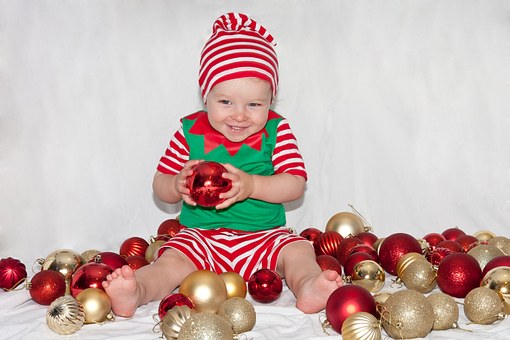Writing Lesson Plan - A Children's Writing Lesson Plan For Beginners

Writing Lesson Plan - A Children's Writing Lesson Plan For Beginners
* Picture books -- In its broadest definition, a picture book is a book in which the illustrations play a significant role in telling the story. Under this umbrella are several types of books:
1. Baby Books -- For infants and young toddlers, these books are generally lullabies, nursery rhymes, fingerplays, or wordless books. The length and format varies with the content.
2. Toddler books -- Very simple stories for ages 1-3 (under 300 words) familiar to a child's everyday life, or concept books (teaching colors, numbers, shapes, etc.) Books are short (12 pages is average) and the format can be board books (sturdy paper-over board construction), pop-ups, lift-the flaps or novelty books (books that make sounds, have different textures, etc.) See the "Max" series of board books by Rosemary Wells (Dial).

3. Picture books -- Traditionally, picture books (also called "picture story books") are 32-page books for ages 4-8 (this age may vary slightly by publisher). Manuscripts are up to 1500 words, with 1000 words being the average length. Plots are simple (no sub-plots or complicated twists) with one main character who embodies the child's emotions, concerns and viewpoint. The illustrations (on every page or every other page) play as great a role as the text in telling the story. Occasionally a picture book will exceed 1500 words; this is usually geared toward the upper end of the age spectrum. Picture books cover a wide range of topics and styles. The list of Caldecott Medal winners, available from your library, is a good place to start your research. Nonfiction in the picture book format can go up to age 10, 48 pages in length, or up to about 2000 words of text.
4. Early picture books -- A term for picture books geared toward the lower end of the 4-8 age range. These stories are simple and contain under 1000 words. Many early picture books have been reprinted in the board book format, thus widening the audience. The Very Hungry Caterpillar by Eric Carle (Philomel) is an example.
As we continue our writing lesson plan, we step up to a slighty older age group:
* Easy readers -- Also called "easy-to-read", these books are for children just starting to read on their own (age 6-8). They have color illustrations on every page like a picture book, but the format is more "grown-up" -- smaller trim size, sometimes broken into short chapters. The length varies greatly by publisher; the books can be 32-64 pages long, with 200-1500 words of text, occasionally going up to 2000 words. The stories are told mainly through action and dialogue, in grammatically simple sentences (one idea per sentence). Books average 2-5 sentences per page. See the "Amelia Bedelia" books by Peggy Parish or other "I Can Read" books published by Harper Trophy.
* Transition books -- Sometimes called "early chapter books" for ages 6-9, they bridge the gap between easy readers and chapter books. Written like easy readers in style, transition books are longer (manuscripts are about 30 pages long, broken into 2-3 page chapters), books have a smaller trim size with black-and-white illustrations every few pages. See "The Kids of the Polk Street School" series by Patricia Reilly Giff (Dell) or the "Stepping Stone Books" published by Random House.
* Chapter books -- For ages 7-10, these books are 45-60 manuscript pages long, broken into 3-4 page chapters. Stories are meatier than transition books, though still contain a lot of action. The sentences can be a bit more complex, but paragraphs are still short (2-4 sentences is average). Chapters often end in the middle of a scene to keep the reader turning the pages. Look at the "Herbie Jones" books by Suzy Kline (Puffin) and the "Ramona" books by Beverly Cleary (Morrow).
* Middle grade -- This is the golden age of reading for many children, ages 8-12. Manuscripts suddenly get longer (100-150 pages), stories more complex (sub-plots involving secondary characters are woven through the story) and themes more sophisticated. Kids get hooked on characters at this age, which explains the popularity of series with 20 or more books involving the same cast. Fiction genres range from contemporary to historical to science fiction/fantasy; nonfiction includes biographies, science, history and multicultural topics. Check out some middle grade novels from the list of Newberry Medal winners at your library to get you started.
Our final stop for this writing lesson plan is one of the hottest areas of publishing:
* Young adult -- For ages 12 and up, these manuscripts are 130 to about 200 pages long. Plots can be complex with several major characters, though one character should emerge as the focus of the book. Themes should be relevant to the problems and struggles of today's teenagers, regardless of the genre. The Outsiders by S.E. Hinton defined young adult when it was first published in 1967; the Newbery Medal award list also contains many worthy titles. A new age category (10-14) is emerging, especially with young adult nonfiction. These books are slightly shorter than the 12 and up category, and topics (both fiction and nonfiction) are appropriate for children who have outgrown middle grade but aren't yet ready for the themes (fiction) or who aren't studying the subjects (nonfiction) of high school readers.
Back with Step 2 of our writing lesson plan soon! In the meantime, visit http://cbiclubhouse.com to learn about the right way to write stories and submit them to children's book publishers.
Laura Backes is the Publisher of Children's Book Insider, the Newsletter for Children's Book Writers. Want to learn how to become a successful children's book author? Come hang with the Fightin' Bookworms at http://cbiclubhouse.com Whether is writing picture books, chapter books, young adult novels, finding children's book publishers -- or anything else -- you'll find all the answers at the CBI Clubhouse! Acid Reflux In Children- Free Interrelated Guideline For Acid Reflux Natural Remedies Children's Awareness Month - a Wakeup Call for Divorcing Par Children's Underwear Goal Setting for Kids Review-Let Us Help Your Child Have Their Wishes Come True Migraine: Medications & Treatments for Children Child Labour in Pakistan Free 42 Inch LCD TV- With Umpteen of Features How To Pick A Flexible Career Working With Kids Various Gifts For Children The ideal cupcake recipe for children Does Your Child Have An Allergic Reaction To Antibiotics Child Behavior For A Three Year Old The Spirituality Of Your Days As A Boy Scout